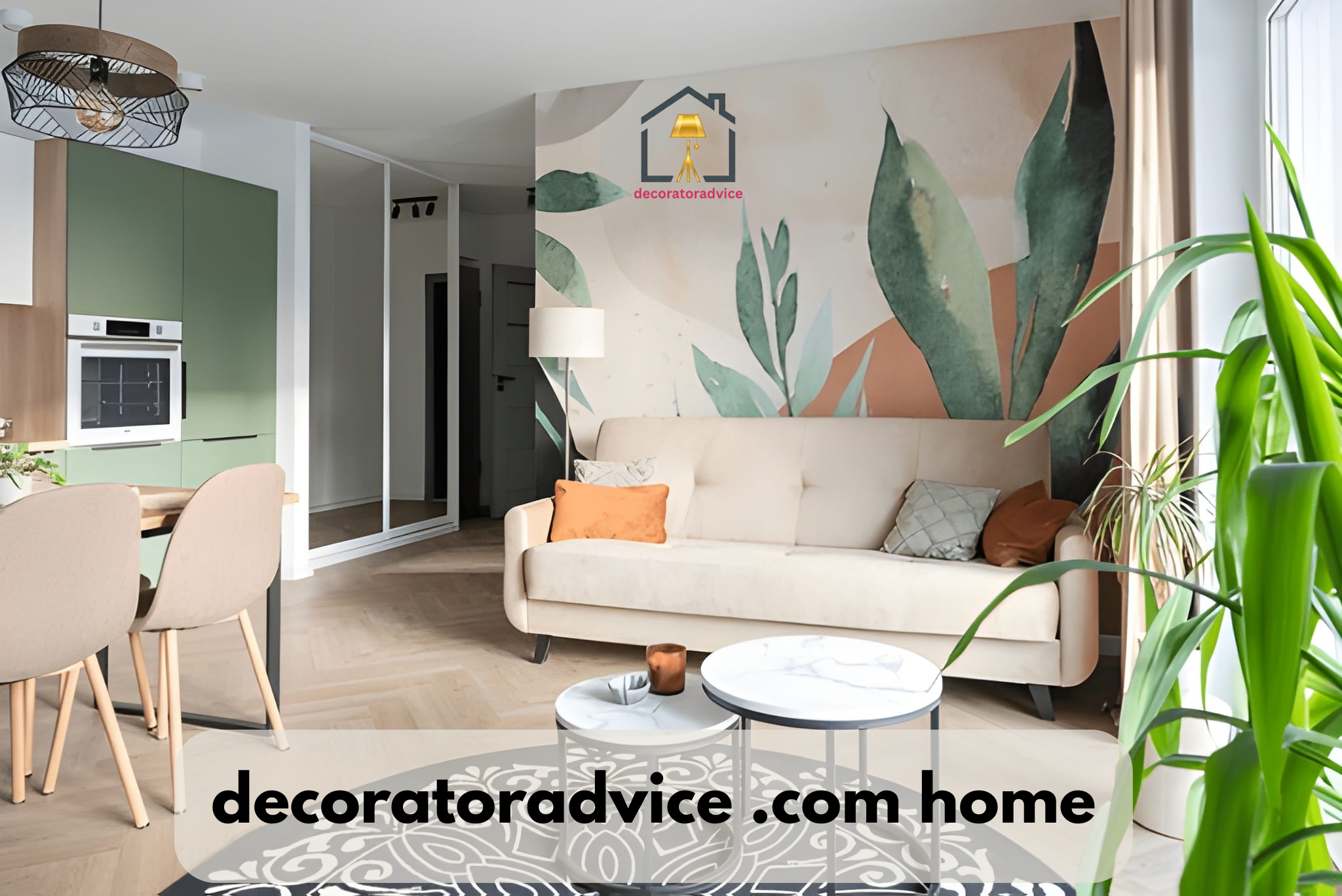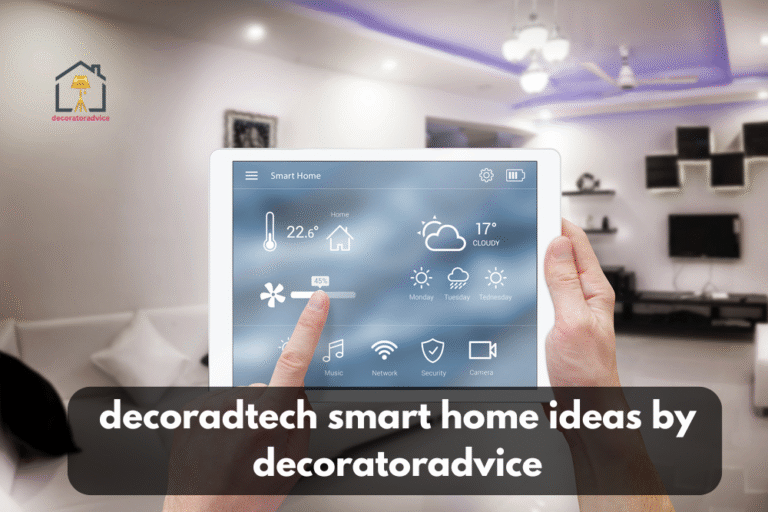Smart and Simple Decorating Tips at decoratoradvice .com home
The way you live should be reflected in your home. Simple choices add up to a calm and useful space. This guide brings decoratoradvice .com home practical steps that fit real life. It shows small upgrades that change how rooms feel. The focus is on easy wins you can do with time or with modest cost. You will learn how to pick colors that last, place furniture for better flow, layer light for mood and tasks, and mix materials that feel right.
You will also see how to style shelves so surfaces look calm and personal. Smart home tools get a plain treatment so they feel useful and not showy. The advice here pulls from hands on guides at decoratoradvice .com home and from practical examples seen in recent how to pieces. The tone stays simple and direct. Read this when you want clear steps. Use what fits your home and skip the rest. For a wider view you can also explore upgrading tips decoradhouse and other insights shared there.
Define your style vision

Start with what you like. Say it in one sentence. That sentence guides every choice. It can be warm and quiet or bold and bright. Keep the sentence short. Use mood words such as calm soft bright or cozy. Those words become your anchors. When you shop or pin images, check them against that sentence. If an item fits the sentence it stays. If not it goes.
Collect photos that feel close to home. Limit them so you do not copy a single room. Use them to spot patterns. You might see repeated colors shapes or textures. Those repeat elements form a cohesive look. Write down three things you want from each room. For example comfort light and storage. These three help when decisions feel fuzzy.
Set one rule for each room. One rule can be about color one about scale and one about furniture placement. Rules prevent impulse buys. Rules also make editing easy. If a piece breaks a rule it is likely not needed. This keeps the home honest and focused.
Use decoratoradvice.com as a resource for visual examples and quick how to guides when you need a starting point. The site collects practical ideas such as decoration tips decoradhouse from decoratoradvice that help you act on a clear vision rather than chase trends.
Craft a smart color palette
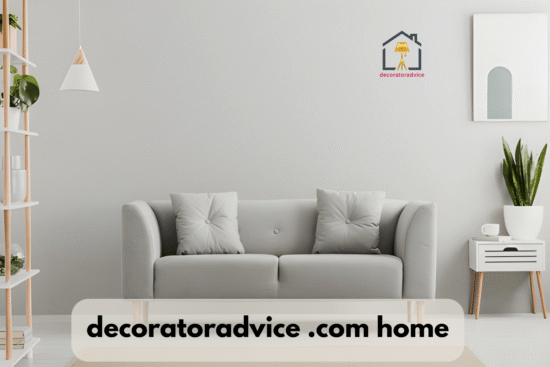
A small color plan delivers a big result. Pick three core colors. One base color sets the room tone. One mid-color gives contrast. One accent color brings spark. Use the base on large surfaces such as walls and sofas. Use the mid color on medium items such as rugs and curtains. Use the accent on small items such as cushions and art.
Experiment with paint swatches on various walls at various times of day. Light changes how a color reads. A soft beige can look cool in morning light and warm by sunset. Place a test patch near your main window and another near your light source. Live with the swatch for a day before deciding.
Keep cohesion through the home by repeating one element of the palette in each room. The finish might be metal, wood tone, or trim color. The eye flows naturally from room to room when the ingredient is repeated in modest quantities. This trick helps open tight layouts and small rooms.
Accent walls work if they anchor a feature such as a fireplace or a bed. Full room color works when you want calm. Pick full color for rooms you use to relax. Use an accent wall in social spaces where you want energy.
Apply the palette rules you find at decoratoradvice.com home when testing and placing color. The site explains simple tests and shows how small changes improve continuity across rooms.
Furniture placement for flow and comfort
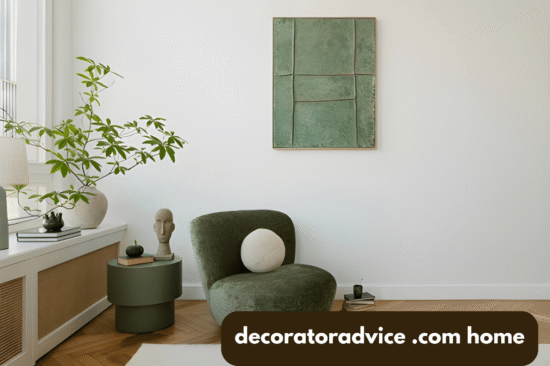
Put people first when you place furniture. Let’s start with the room’s primary function. If the room is for a gathering place, seat them facing each other. If the room is for workplace seating toward the task. Create clear paths so you can move without squeezing past furniture. Aim for at least a small walking lane between the coffee table and the sofa.
Anchor seating with rugs or a central table. This tells the eye where the main zone sits. Use furniture to create pockets for different activities rather than crowding everything together. A little side table and a lounge chair form a reading corner without a large remodel.
Float large pieces when walls do not help. A floating sofa can create natural pathways and better sight lines when the room is deep or open plan. Pull furniture away from walls when you want the room to feel layered. Push pieces to the wall when you need floor space for activity or play.
Choose a scale that fits. A huge sofa in a small room will be crowded and feel heavy. A set of smaller pieces layered together can feel lighter and be more flexible. Before purchasing, measure the floor and use tape to mark it for fit.
decoratoradvice com features examples of modular and multipurpose furniture that help rooms adapt. These examples show how small furniture swaps improve flow without extra cost.
Layer lighting for mood and function
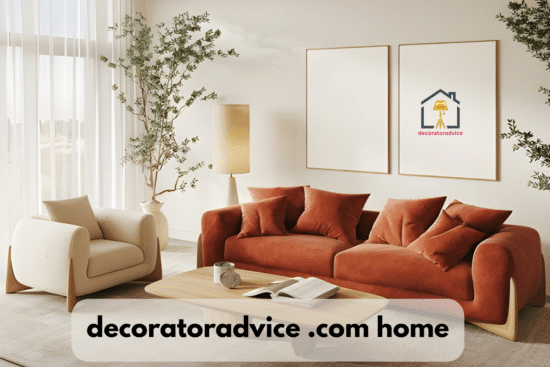
Lighting is a design tool and a utility. Use three layers to get both. Ambient light fills the room. Task light helps work and reading. Accent light highlights art and architecture. Plan all three to make rooms flexible.
Install dimmers where you can. Dimming changes the mood without adding new lamps. Use smart bulbs for easy scheduling and color temperature shifts in accordance with your schedule. Smart lighting makes mornings bright and evenings soft with a single control.
Place task lights near reading chairs sinks and desks. Avoid relying on one central ceiling fixture for every task. A well placed floor lamp solves many problems and consumes little energy.
Hide cables and use clean mounting for fixtures. Visible cables make the room feel unfinished. Use cord covers or route wires behind furniture.
decoratoradvice .com home walks through practical setups for kitchens living rooms and bedrooms so you can match light to use. Their guides make it clear where to add task light and when to invest in smart control.
Texture pattern and material mix
Texture brings depth without more color. Mix soft textiles with harder surfaces. Use rugs throws and curtains for softness. Pair them with wood stone or metal for contrast. Keep patterns scaled. If one piece has a bold pattern balance it with solids nearby.
Use natural materials when possible. They age well and add warmth. Linen cotton wool and wood show wear in a way that feels lived in. Reclaimed wood and secondhand pieces add story without a big price tag.
Avoid too many competing finishes. If brass shows up in light fixtures carry a small brass detail to another corner. Repeat one metal finish or one wood tone across the room to hold the palette together.
Sustainable choices matter and they also act as quality signals. Choosing solid pieces that repair easily reduces waste and often feels better to live with. Use fabric swatches and small material samples to see how things sit together before buying.
The mixing approaches found at decoratoradvice .com home help you combine texture pattern and material with restraint.
Style your shelves surfaces and corners
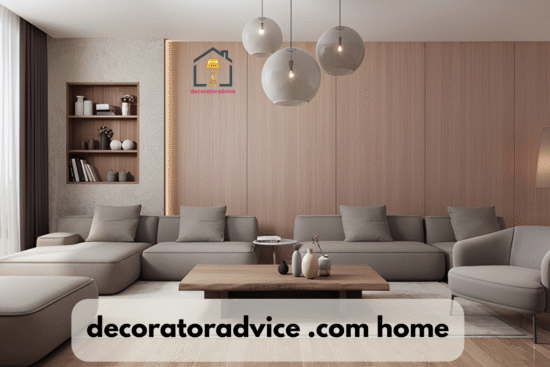
Shelves and tabletops are where personality shows. Start with a clean shelf. Edit down to a few favorites. Use height variation to keep the eye moving. Place tall items at the back. Place smaller items in the front.
Group objects in odd numbers and keep some empty space. Empty space is not wasted. It helps the curated items breathe. Use books both upright and stacked to create layers. Add one living plant to soften a row of objects.
Rotate small displays seasonally or when you need a fresh look. Swap three items rather than changing everything. This keeps the editing simple and the cost low.
Corners are often overlooked. A plant a floor lamp or a narrow console table can make a corner read as deliberate. Use corners for single function moments such as a small reading nook or a planters cluster.
decoratoradvice .com home offers step by step examples for shelf styling and surface edits that keep displays calm and useful.
Smart decor tech integrating utility with beauty
Smart tools should blend into the room. Use bulbs that match your usual light and smart plugs for simple automation. Motorized blinds add privacy without feeling like gadgets.
Hide hardware where possible. Place hubs in ventilated cabinets and run cables neatly so the space stays clean.
Choose tech that makes life easier, like a thermostat that learns your routine or a lock with guest codes.
You can see decoradtech smart home ideas by decoratoradvice for ways to set up lighting, blinds, and hidden storage so upgrades feel natural in any home.
Personalization that speaks you
Personal objects make a house feel like yours. Curate a small set of meaningful items and place them with care. A single photo placed in an interesting frame reads better than an unedited cluster.
Travel items work when you group them with neutral objects. A shell or a small textile looks intentional when paired with a simple book and a plant. Avoid filling a shelf with many small souvenirs. Choose three or four to keep meaning intact.
Gallery walls should follow a loose grid or flow. Use a common frame color or a common mat width for unity. Keep the arrangement at eye level for the room. Alternate parts to keep the wall dynamic instead of static.
Personalization shows best when the rest of the room is edited. A calm backdrop makes personal objects stand out. latest decoratoradvice .com updates often highlight new ways to use your existing items to build meaning rather than clutter.
Small rooms odd layouts and challenge zones
Small rooms need scale, not sacrifice. Choose slimmer furniture and pieces with legs to show floor and create light. Double the amount of daylight by using mirrors across from windows. Vertical storage uses height without stealing floor space.
Zone regions using carpets, lighting, and furniture arrangement in a room with an irregular form. A rug can define a sitting area in a wide hallway. A narrow console with slim legs fits where a bulky cabinet would block flow.
Corners need targeted fixes. Use triangular shelves or corner desks to use dead space well. Stack storage upward rather than outward when floor area is tight.
When remodeling is not an option look for modular items that move with you. A small extendable table or nesting tables give surfaces as needed without constant weight in the room.
Guides at about decoratoradvice .com show practical swaps and measure first tactics that avoid bad purchases. These ideas save money and keep small rooms useful.
Maintain refresh and adapt over time
A home evolves with you. Keep seasonal swaps small and manageable. Change cushions throws and a few small items to shift mood. Deep edits once a year keep accumulation under control.
When selling focus on neutral touches that still feel warm. Small changes like new light bulbs a fresh coat of neutral paint and decluttered surfaces make a room read larger and brighter. Exterior changes such as a refreshed entry or a tidy garage door can improve curb appeal and value.
Plan refreshes around routines. If you clean every spring pick two items to edit that month. If you host often make the living areas easy to reset with hidden storage and multi use furniture. Budget a small yearly amount for repairs and key updates rather than waiting for big problems.
Check https//decoratoradvice.com for seasonal updates and see how decoratoradvice .com partners share their real life refresh strategies that keep homes current without major overhauls.
Final thought on doing less and doing it well
Good decorating is less about new stuff and more about clear choices. Choose what you love then edit. Work in small steps. One change often improves how you feel in a room more than many small additions.
Use the practical how to content at decoratoradvice .com home for examples and checklists when you want a short plan. The site gathers realistic projects that fit busy lives and modest budgets. Use those projects to guide edits and avoid wasted purchases. Make small changes that last and your home will slowly become more calm useful and personal.

